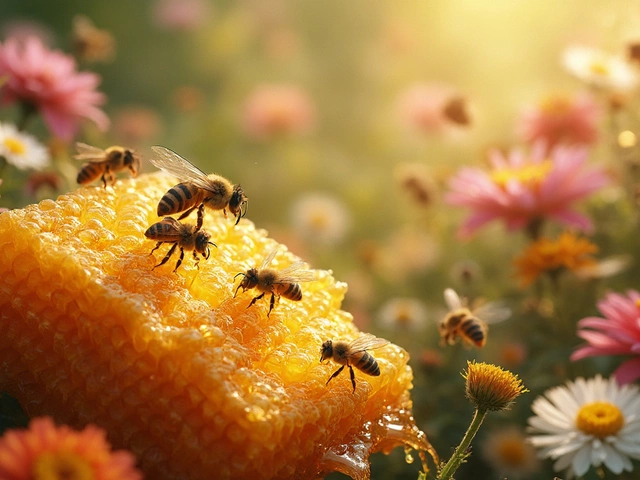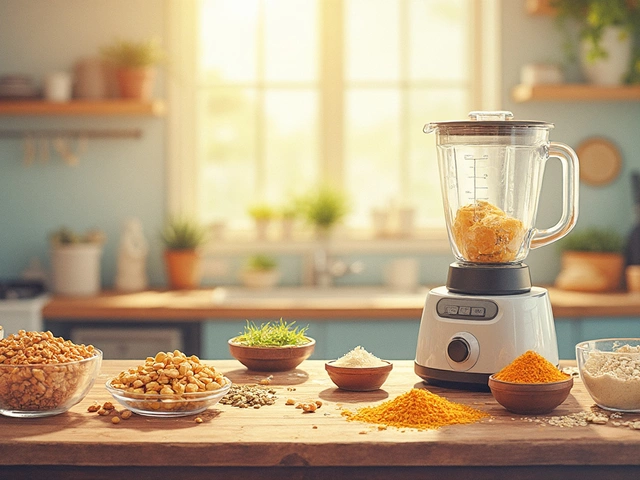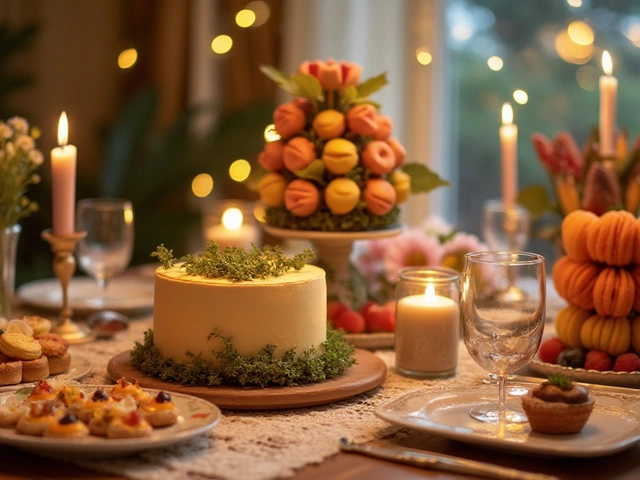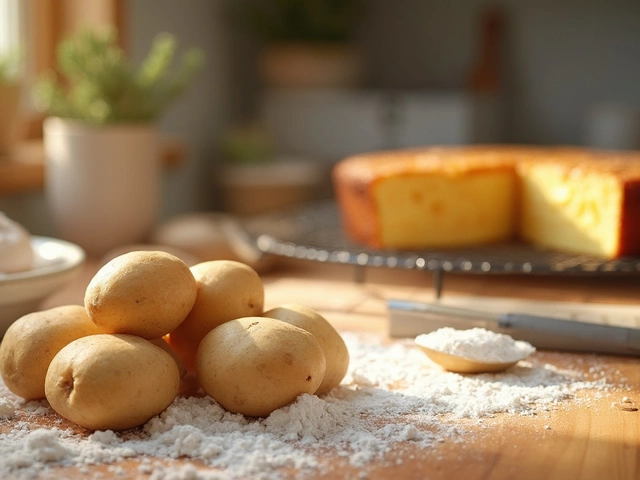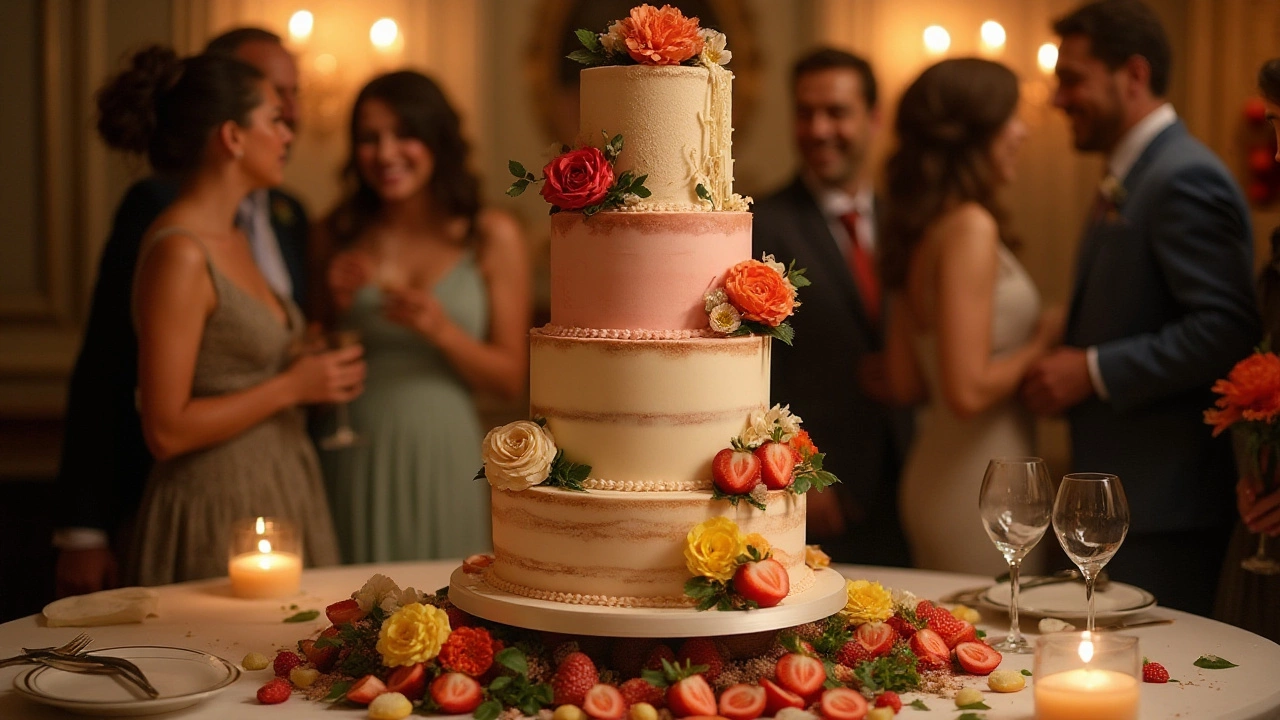
Celebrating a birthday is not complete without a cake, but when it comes to picking the right size, things can get a bit tricky. Different sizes suit different occasions, and choosing the perfect one could make all the difference between a successful party and one where some might leave without a slice.
In deciding the best cake size for your celebration, understanding the basics of cake servings and their relation to various sizes is important. Moreover, choosing between popular sizes often depends on the number of guests and even the type of party you are hosting. This guide helps you navigate through common options, ensuring you choose the right fit for your special occasion.
- Understanding Cake Servings
- Popular Cake Sizes
- Cake Shapes and Styles
- Choosing Right for Your Occasion
- Top Tips for Cake Selection
Understanding Cake Servings
When it comes to planning any birthday party, getting the cake size right is key. The concept of cake servings revolves around how the cake is sliced to comfortably feed a specific number of guests. Each slice should be enough for an individual to enjoy without feeling shortchanged or having too much leftover. Deciding the size of a birthday cake involves not just the head count, but also the appetite and preferences of the party-goers. Commonly, cake slices range between one to two inches per slice, depending on the style and density of the cake.
It's notable that standard cakes in bakeries often have suggested serving sizes. For example, a classic 8-inch round cake can provide about 20 generous slices, but it might be divided into 24 moderate pieces if guests aren't too hungry. On the other hand, those preferring smaller slices might even stretch this number further. Sometimes, it's not just about the size; the richness of the cake itself impacts serving sizes. A dense chocolate cake might satisfy in smaller slices, while a lighter angel cake encourages larger portions.
Understanding the dynamics of cake servings also involves recognizing differences in shapes. Round cakes, for instance, offer a different slicing strategy compared to square or rectangular ones. Square cakes often allow for more precision and equal pieces, making them ideal for large gatherings. Another aspect is knowing the coverage you need. For larger parties, tiered cakes not only provide grandeur but can also cater to more guests with varied flavors and textures for each layer. Such considerations ensure each guest walks away with not just a slice of cake, but a slice of satisfaction.
"Choosing the right cake size is an art, much like ensuring the party is memorable," suggests baking expert and pastry chef, Anne Taylor. "It's not about the size alone; it's about the whole cake experience."
Furthermore, some may opt to complement the main cake with cupcakes or mini-cakes, which adds flexibility and extends serving capacities without complicating the culinary logistics. This practice is increasingly popular, giving guests choices and ensuring dietary preferences are catered to. To illustrate potential cake servings clearly, consider the following simplified guide:
| Cake Size | Approximate Servings |
|---|---|
| 6-inch round | 10-12 servings |
| 8-inch round | 20-24 servings |
| 10-inch round | 28-38 servings |
| Quarter sheet | 12-24 servings |
Being well-prepared by understanding these details ensures no guest is left cake-less, leaving everyone with sweet memories of a fantastic celebration. This guide aims to equip you with the know-how to accommodate your guest list while ensuring none of the cake grandeur is lost in the process.
Popular Cake Sizes
When it comes to birthday cake size, one size definitely doesn't fit all. Each celebration has its own charm, and so should your cake. Some prefer the grandeur of a tall three-tier cake, while others are content with a simple sheet cake that serves its purpose efficiently. The trick is in knowing your audience and understanding the event you are hosting. Generally, cakes are categorized into standard sizes: the ever-popular 8-inch round cake, perfect for small gatherings, offers simplicity and elegance. Its graceful dimensions comfortably serve between 12 to 16 people, making it a crowd favorite at intimate birthday parties.
Rising in popularity is the 9x13 inch sheet cake, a preferred choice for larger groups. Its generous proportions can accommodate 20 to 30 slices, ideal for school settings or larger family reunions. This kind of cake provides ample flexibility in design and flavor, often gaining attention for its customization options. There’s something inherently satisfying about slicing through a flawless sheet of icing to reveal layers of moist cake goodness underneath.
"A great cake not only fits the theme, but it also hits the sweet spot in serving size," notes John Crumble, a renowned pastry chef known for his creative custom cakes.
The layer cake, distinct in its aesthetics, brings an element of grandeur to birthday party cake presentations. These towering masterpieces, normally 6 to 12 inches in diameter, can vary in height, credit to their dramatic stacked layers. They often function as the centerpiece of the event, mesmerizing guests with their tiered elegance. The size of these cakes is pivotal, and though they might visually appear smaller than their sheet counterparts, each layer typically adds to the number of servings, reaching upwards to accommodate 25 slices or more, depending on its assembly.
Cake serving guide insights reveal that square cakes often yield more pieces than their round equivalents of the same size. A 10-inch square cake provides a practical alternative, serving roughly 30 people with equitable portions. This might just be why they are gaining traction among event planners who prioritize efficiency without compromising on taste or visual appeal. It's akin to tetris for cake lovers, each slice a perfectly carved piece of the celebratory puzzle. The steady rise in its popularity points to its versatility and ability to fit into any party scenario.
Akin to the diversity of cake sizes, today's trends see a significant number of ball or dome-shaped cakes making their mark at birthday parties. Not just a feast for the taste buds, these cakes bring a whimsical dimension to any celebration. Often ranging from small servings of 6-8 guests, they owe their appeal to novelty and creativity rather than volume. Their recent advent in social media 'insta-faves' has further solidified their place in the repertoire of cake offerings astute bakers now carry.
The demand to innovate while also delivering on the expected aspects of size and servings is a constant challenge for bakers worldwide. They must balance tradition with modern twists to stay competitive. This dynamic has nurtured a culture where the size of the cake seamlessly integrates with its design and the overall mood of the occasion, ensuring each slice is not only delectable but also cherished.
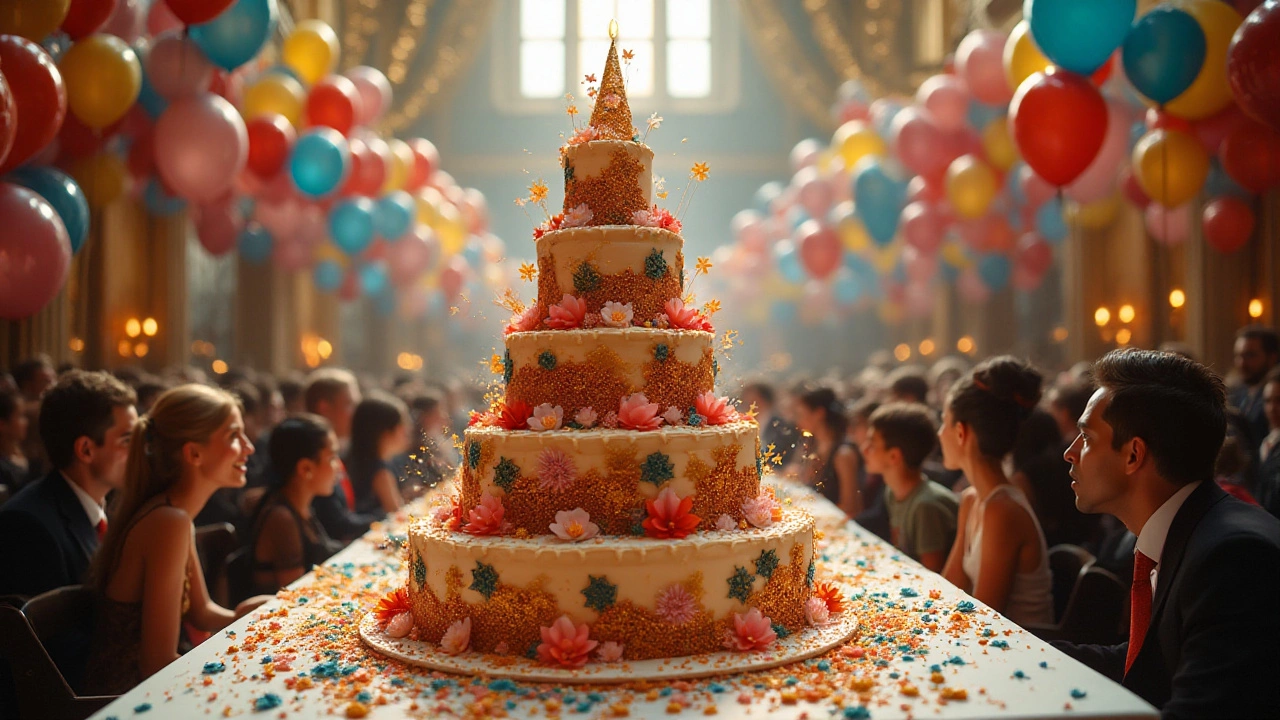
Cake Shapes and Styles
The shape and style of a birthday cake play a crucial role in making any celebration memorable. It’s more than just an aesthetic choice; the shape can greatly influence the number of servings and the cake's presentation at your event. Traditional round cakes are a classic for birthdays and other celebrations, often coming in various diameters such as 6, 8, 10, and even 12 inches. A single layer round cake can be elegantly simple, while layers imply grandeur and generosity. Round cakes offer evenly distributed slices which make portioning directly easy, providing a neat visual harmony at the party table.
Another popular option is the square cake. Square cakes offer a modern flair and can often yield more pieces than a round cake of similar size. This is because square shapes use space more efficiently, reducing the amount of waste from pie-shaped cuts. Square cakes make a bold statement and can be stacked for multi-tier creations that look both robust and stylish. For those seeking to break away from tradition, consider hexagonal or even heart-shaped cakes for a more customized touch. These cakes are often chosen for their unique appeal and their ability to convey a more personalized message, though they might require specialized cutting techniques for equal serving sizes.
The New York Times once noted, "The shape of a cake can change the mood of a celebration and define its theme."
Let’s not forget themed shapes which have gained tremendous popularity in recent years, especially for children's birthdays. With the rise of fondant art, cakes are transformed into characters, landscapes, or even replicas of favorite toys. These cakes, while slightly more complex, offer a wow factor that leaves guests in awe. Another trendy option is the number cake, molded into the number of the celebrated age, adding a playful element to the party atmosphere. Styles often incorporate vibrant colors, edible topography, and thematic decor, from unicorns to cars, to suit the birthday boy or girl's fancy.
Then there are cupcakes – the mini yet mighty alternatives that offer flexibility and variety. Cupcakes are essentially individualized portions, ideal for those who appreciate neatness and who wish to offer a selection of flavors without committing to a single cake type. Displayed in a tower form, cupcakes add multi-dimensional visual interest. For those wanting freshly designed ideas, hybrid approaches such as cake pops or log cakes could make an appearance, especially popular in themed events. Understanding your attendees' preferences and your own artistic warmth will guide you toward the best choice.
Acknowledging the role of the cake style can turn party planning from obligatory errands to a joyful journey. Whether opting for a chic minimalist design or an elaborate masterpiece, matching the cake layout to the party’s theme can tie the entire celebration together. In many cases, it is the cake that becomes the central focal point, epitomizing the day's uniqueness. Remember, the cake is often the item that guests look most forward to after the celebrations; hence, its shape and style should reflect both your personality and the essence of the festivity.
Choosing Right for Your Occasion
When planning a birthday celebration, selecting the right birthday cake size involves striking a balance between aesthetics, tradition, and practicality. The first thing to consider is the number of guests you anticipate. A smaller cake might work perfectly for a cozy gathering of close family and friends, while a larger, multi-tiered cake can be a show-stopping centerpiece at big parties or milestone events. A quick estimation technique suggests allocating one slice per guest, so a party with 20 attendees might warrant a cake size that provides at least 20 servings.
Another critical factor is the type of event you are hosting. Is your celebration formal or casual? If you’re planning an elegant dinner affair, you might want a cake that mirrors the sophistication, perhaps a tiered cake with intricate designs. Conversely, simple cakes often suit relaxed backyard gatherings where children are the stars of the show. In such cases, popular cake sizes often emphasize being practical and approachable.
Within this context, you could say that “less is more” or that simplicity sometimes reigns supreme. Interestingly, the traditional half-sheet cake, measuring around 12 by 16 inches, has become a sweetheart for medium-sized birthday celebrations. It's spacious enough to cater to a decent crowd yet compact enough to easily fit on a dining table. A quote that resonates in this context from renowned pastry chef Julia Child is, “
With enough butter, anything is good.” This speaks to the importance of focusing on quality, not just size.
Your cake choice could also reflect culinary trends or regional preferences. For instance, in some cultures, fruit-filled cakes hold symbolic meanings and can lead to selecting round or Bundt-shaped cakes, which vary regarding servings. Another fascinating point to consider is the height of your cake. Tall, multi-layer cakes serve more as a visual spectacle than an additional dessert due to each layer’s modest slice portion.
Indeed, cake aesthetics are vital, but don't overlook individual dietary needs. Consider if your guests have specific dietary preferences or restrictions. Offering an alternative that compliments or stands alongside your primary cake choice, like a smaller gluten-free or vegan cake, might be good. It's vital not to lose sight of how essential inclusion can be when celebrating these important moments.
Finally, your budget plays a critical role. Often, larger cakes involve more ingredients and time, and intricate decorations add to the cost. Discuss with the bakery or cake artist about what works best for you to strike the ideal balance. Being transparent about your budget in the initial discussions means you can work together to create a stunning cake that doesn’t break the bank.
To sum it up, picking the right cake size isn't just about feeding your guests; it's about tying it all together with the theme, occasion, and personal desires. Creating a memorable experience is ultimately what these moments are about, and having the perfect cake that embodies all these elements will make the effort worthwhile.
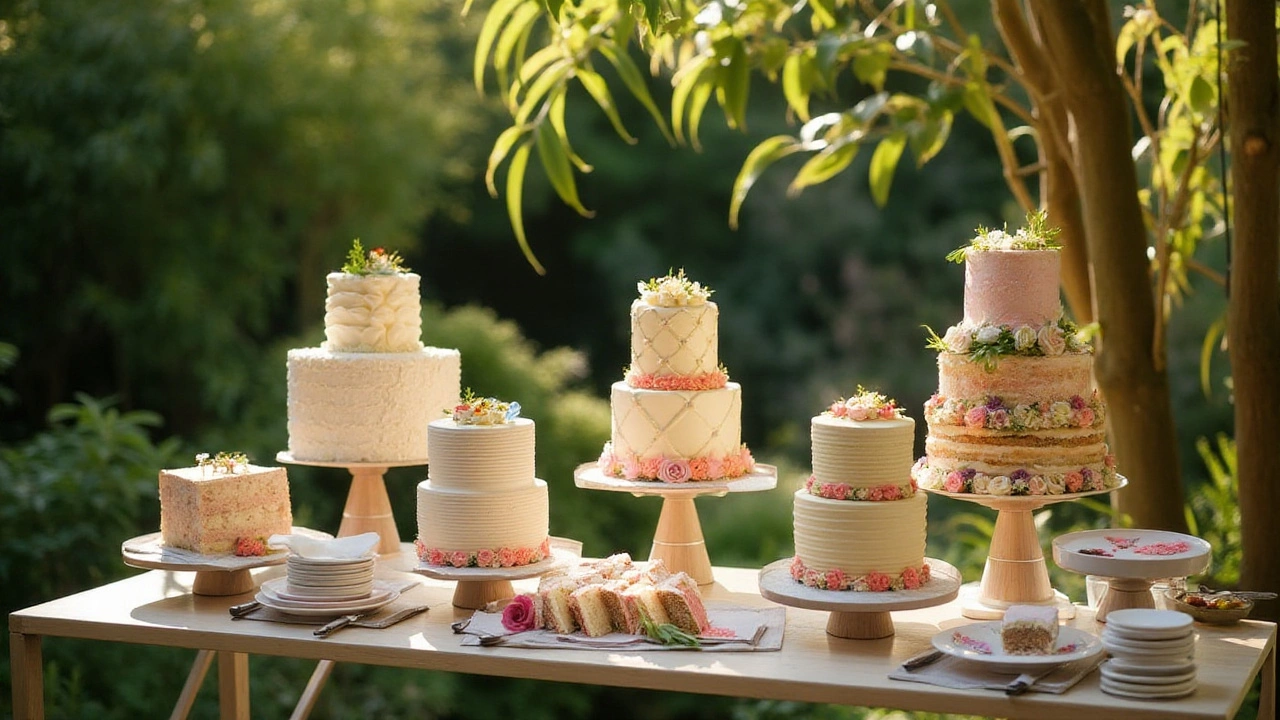
Top Tips for Cake Selection
When it comes to choosing the perfect birthday cake size, a thoughtful approach can save you a lot of potential stress and ensure that no guest leaves without a delightful piece. Start by considering your guest list and pace your selections based on who'll be attending. Family gatherings might call for simple but delicious options, while a more formal celebration could demand something elaborate and chic.
The size of your cake should align with the number of servings you'll need. Generally, an 8-inch round cake comfortably serves about 12 people, while a 10-inch cake might be suitable for 20. But don't get stuck in the numbers; think about the appetite of your attendees. Kids’ parties, for instance, might require larger slices than a casual adult gathering. Adjusting for serving sizes can make a big difference in how many cakes you actually need.
Cake Shape and Guest Preferences
Besides traditional rounds, cake serving guide experts recommend exploring shapes as they add aesthetic appeal and can affect serving numbers. Square cakes are ideal for maximizing slices, while a two-tiered option provides more servings without taking up too much table space. Always account for the shape when estimating servings, as cutting techniques vary.
Consider asking if any attendees have specific dietary restrictions or preferences. Today, gluten-free and vegan cakes are easier to find and often taste just as delicious. Including these options can make your event inclusive and ensure no one feels left out of the celebrations. A personalized touch like this often leaves a lasting impression.
"The most beautiful cakes are those that are remembered not just for their looks, but for how they made everyone feel included in the celebration." - Renowned pastry chef Jacques Bloomfield.
Considering Cake Styles
Next, think about the style of cake that suits your theme. Classic buttercream might appeal to a broad audience, but creatively exploring options like folk-inspired naked cakes or lush fondant-covered wonders can add visual and taste dimensions to your celebration. Align cake style not just with guest taste preferences but with the theme of your party to create a cohesive experience.
A worthy mention is considering the climate and the event setting. Buttercream might be at risk in the hot sun, while sturdier fondant is more heat-resistant. Plan ahead and ensure your designated cake spot is cool enough to maintain its form until serving time, balancing form with function for perfect results.
Smart Budget Choices
Finally, don’t forget your budget. Though it may be tempting to go overboard with intricate designs and additional tiers, it's important to remember that a great cake doesn’t have to break the bank. Work with your baker to prioritize elements, ensuring you get a popular cake size and style that aligns with your celebrations without unnecessary extras.
In summary, selecting the right cake is about understanding your space, guest desires, and budget. Whether it’s a three-tiered masterpiece or a simple sheet cake, make sure it leaves a sweet memory for all who have the pleasure of indulging in it.

